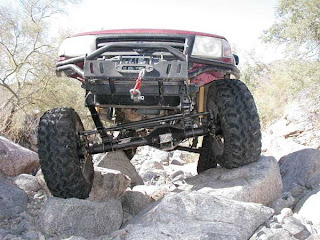1.Monocoque
2. Backbone Chassis
3. Body on frame
4. Sub Frame
SUSPENSION PRINCIPLES
- To restrict road vibrations from being transmitted to the various components of the vehicle
- To protect the passengers from road shocks
- To maintain the stability of the vehicle in pitching and rolling
SPRING TYPES
Leaf spring: Leaf springs are one of the oldest forms of damping materials ever made. They are very simple in design with a non-complicated construction. They can be a mono-leaf or a multi-leaf type. Use of longer springs gives a soft suspension. Generally, rear springs are kept longer than the front springs. This causes them to vibrate at different frequencies, which prevents excessive bounce. The springs are provided with metallic or fabric covers to exclude dirt.
The stresses are lower and more uniform compared to the conventional springs, thus giving longer life.
They occupy less space.
In case of single taper leaf spring, there is no collection of moisture between the leaves and hence no fatigue due to corrosion damage at the asperities of contact surfaces.
Coil spring: The coil springs are the most commonly used springs in light duty vehicles. They are mainly used with the independent suspension, though they have also been used in the conventional rigid axle suspension as they can be well accommodated in restricted spaces. The energy per unit volume is almost double in the case of coil springs than the leaf springs. The coil spring is a length of round spring steel rod that is wound into a coil. Unlike leaf springs, conventional coil springs do not develop inter-leaf friction. Therefore, they provide a smoother ride.
Torsion Bar: Torsion bar is simply rod acting in torsion that takes shear stresses only. These are made of heat treated alloy spring steel. Torsion bar is fixed at one end to the frame of the vehicle. At one end, the torsion bar is fixed firmly in place to the chassis or frame of a vehicle where as other end is attached to the axle, suspension arm. The force produce due to the vehicle create the torque on the bar.
There are also two main disadvantages of torsion bar suspensions. The first is that it does not take the braking or driving thrust so that additional linkages have to be provided for that purpose. The second disadvantage is the absence of friction force, and hence of damping which is a necessity to control the vibrations produced due to road shocks.
Hydraulic Spring (Shock Absorber): In hydraulic shock absorber fluid in a cylinder is forced by piston and thus resistance to the piston movement is developed that provides damping effect.
SUSPENSION TYPES
Solid Axle: The solid, or beam, axle is used in the rear suspension of many front-engined, rear-wheel drive cars, and light commercial vehicles, and as the front suspension on many heavy commercial vehicles.
Dead Axle: A dead axle only supports the vehicle and doesn't transmit any drive. With a live axle, the drive is transmitted through the final drive unit and axles to the wheels.
Independent Suspension: Independent suspension helps keep unsprung mass low. Also, if a wheel hits an irregularity, it won't upset the opposite wheel on the same axle. It allows wheel camber to be adjusted, or designed into the suspension geometry.
Rear independent suspension: For independent suspension on the rear of a vehicle, many front-wheel drive cars use a McPherson strut at the rear. On rear-wheel drive vehicles, the suspension has to allow for the external drive shafts.
Rear wheel drive independent suspension: On rear-wheel drive vehicles with independent suspension, the final drive unit is fixed to the vehicle frame. Drive is transmitted to each wheel by external drive shafts.










No comments:
Post a Comment